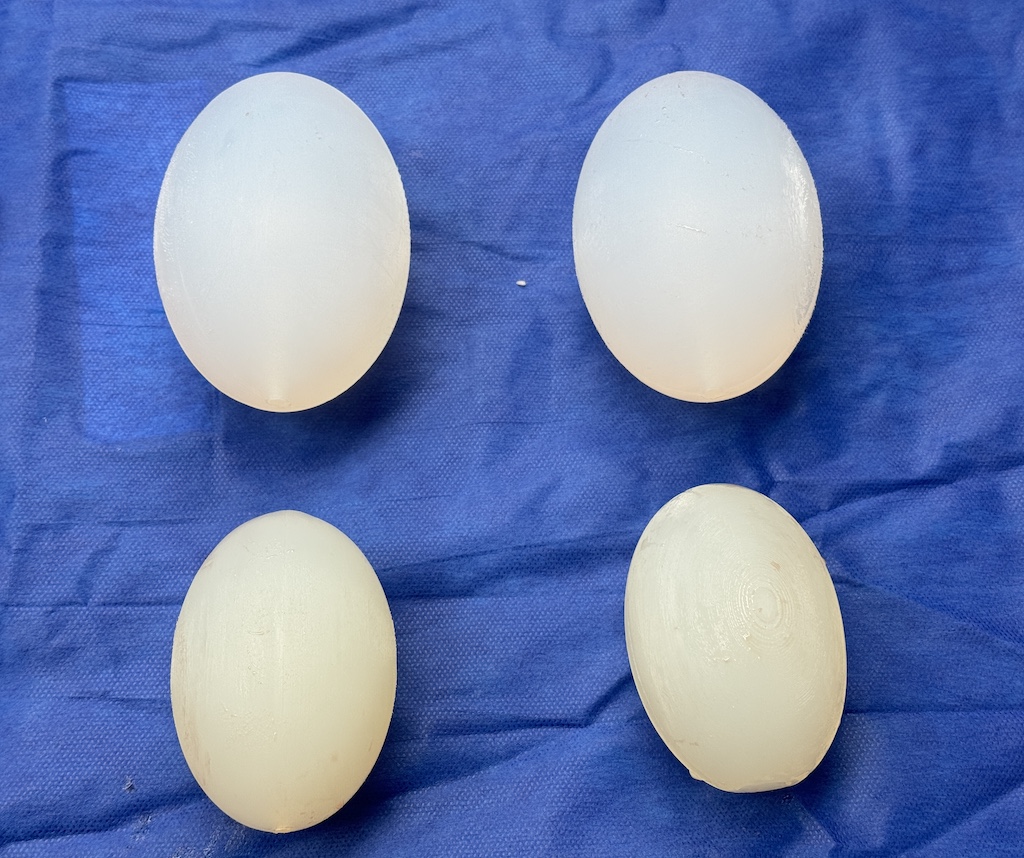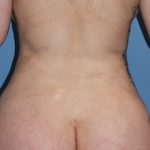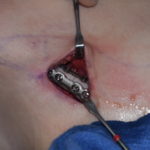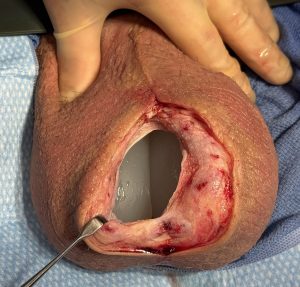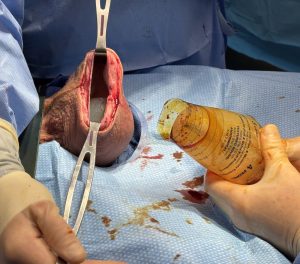Background
Testicular implants for aesthetic enhancement are often sought due to testicular atrophy. Aging and hormone replacement therapy can lead to reduced testicular size and a looser, emptier scrotum. This relative void can be corrected with implants that are sufficiently large to offset the smaller natural testicles. Known as the implant displacement technique, this approach works best when the implant is at least 70% larger than the patient’s natural testicles.
The largest standard testicular implant is 5.0 cm. For most patients, achieving adequate displacement requires custom implants, typically in the 5.5–6.5 cm (XL) range. Some patients request even larger implants, 6.5–7.5 cm (XXL), which represent the upper limit of what can safely be accommodated in most men.
In rare cases where both testicles have been removed, more space is available for custom implants. This allows for significantly larger sizes if desired. For example, one large male patient underwent removal of both testicles and silicone granulomas caused by prior injections, followed by placement of 8.5 cm (XXXL) custom implants. Two years later, he requested even larger replacements—10.5 cm implants. The question was whether these could be safely placed.
Case Study
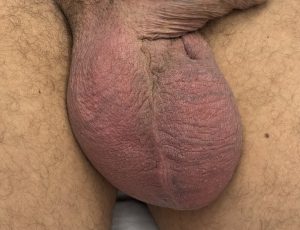
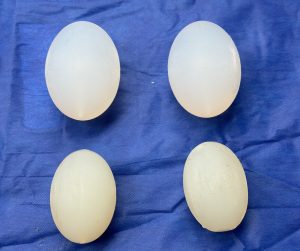
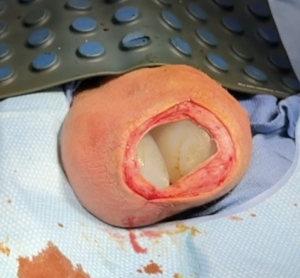
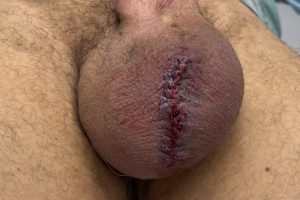
Discussion
This case underscores the importance of understanding implant volume dynamics. While testicular implants are not perfect spheres, their volume increase is comparable to that of a sphere, where small increases in radius produce significant increases in volume (V = 4/3?r³). This translates directly into greater tissue displacement and pocket expansion than might be anticipated from linear size measurements alone.
Generally, implant exchanges can accommodate up to a 50% increase in volume. In this case, because the patient had no native testicles and already had XXXL implants in place, he was able to exceed that guideline and successfully receive implants representing a 75% volume increase.
Key Points
-
In properly selected patients with sufficient scrotal skin, extraordinarily large custom testicular implants can be achieved.
-
A funnel insertion technique allows large implants to be placed through a limited midline incision.
-
With very large implants, both devices typically share a single scrotal pocket.
Dr. Barry Eppley
World-Renowned Plastic Surgeon

